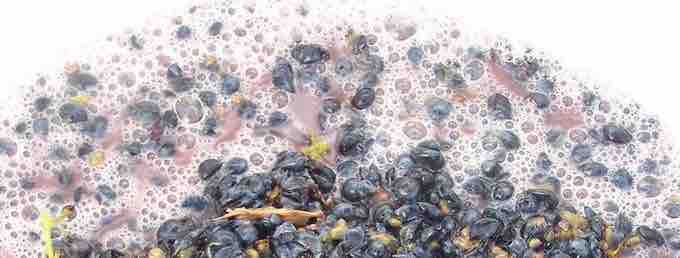Fermentation includes the processes by which energy is extracted from the oxidation of organic compounds. The oxidation of organic compounds occurs by utilizing an endogenous electron acceptor to transfer electrons released from nutrients to molecules obtained from the breakdown of these same nutrients .

Common types of fermentation
These are common types of fermentation utilized in eukaryotic cells.
There are various types of fermentation which occur at the industrial level such as ethanol fermentation and fermentation processes used to produce food and wine. The ability to utilize the fermentation process in anaerobic conditions is critical to organisms which demand ATP production by glycolysis. Fermentation can be carried out in aerobic conditions as well, as in the case of yeast cells which prefer fermentation to oxidative phosphorylation. The following is a brief overview of a few types of the large-scale fermentations utilized by industries in production creation.
Ethanol Fermentation
Ethanol fermentation is used to produce ethanol for use in food, alcoholic beverages, and both fuel and industry. The process of ethanol fermentation occurs when sugars are converted into cellular energy. The sugars which are most often used include glucose, fructose, and sucrose. These sugars are converted into cellular energy and produce both ethanol and carbon dioxide as waste products. Yeast is the most commonly used organism to produce ethanol via the fermentation process for beer, wine, and alcoholic drink production. As stated previously, despite abundant amounts of oxygen which may be present, yeast prefer to utilize fermentation. Hence, the use of yeast on a large-scale to produce ethanol and carbon dioxide occurs in an anaerobic environment.
The ethanol which is produced can then be used in bread production. Yeast will convert the sugars present in the dough to cellular energy and produce both ethanol and carbon dioxide in the process. The ethanol will evaporate and the carbon dioxide will expand the dough. In regards to alcohol production, yeast will induce fermentation and produce ethanol. Specifically, in wine-making, the yeast will convert the sugars present in the grapes. In beer and additional alcohol such as vodka or whiskey, the yeast will convert the sugars produced as a result of the conversion of grain starches to sugar by amylase . Additionally, yeast fermentation is utilized to mass produce ethanol which is added to gasoline. The major source of sugar utilized for ethanol production in the US is currently corn; however, crops such as sugarcane or sugar beets can be used as well.

Fermentation in grapes
This is a photograph of grapes undergoing fermentation during the wine-making process.
Recombinant Products
Fermentation is also utilized in the mass production of various recombinant products. These recombinant products include numerous pharmaceuticals such as insulin and hepatitis B vaccine. Insulin, produced by the pancreas, serves as a central regulator of carbohydrate and fat metabolism and is responsible for the regulation of glucose levels in the blood. Insulin is used medically to treat individuals diagnosed with diabetes mellitus. Specifically, individuals with type 1 diabetes are unable to produce insulin and those with type 2 diabetes often develop insulin resistance where the hormone is no longer effective.
The increase in individuals diagnosed with diabetes mellitus has resulted in an increase in demand for external insulin. The mass production of insulin is performed by utilizing both recombinant DNA technology and fermentation processes. E. coli, which has been genetically altered to produce proinsulin, is grown to a large amount to produce sufficient amounts in a fermentation broth. The proinsulin is then isolated via disruption of the cell and purified. There is further enzymatic reactions that occur to then convert the proinsulin to crude insulin which can be further altered for use as a medicinal compound.
An additional recombinant product that utilizes the fermentation process to be produced is the hepatitis B vaccine. The hepatitis B vaccine is developed to specifically target the hepatitis B virus infection. The creation of this vaccine utilizes both recombinant DNA technology and fermentation. A gene, HBV, which is specific for hepatitis B virus, is inserted into the genome of the organism yeast. The yeast is used to grow the HBV gene in large amounts and then harvested and purified. The process of fermentation is utilized to grow the yeast, thus promoting the production of large amounts of the HBV protein which was genetically added to the genome.